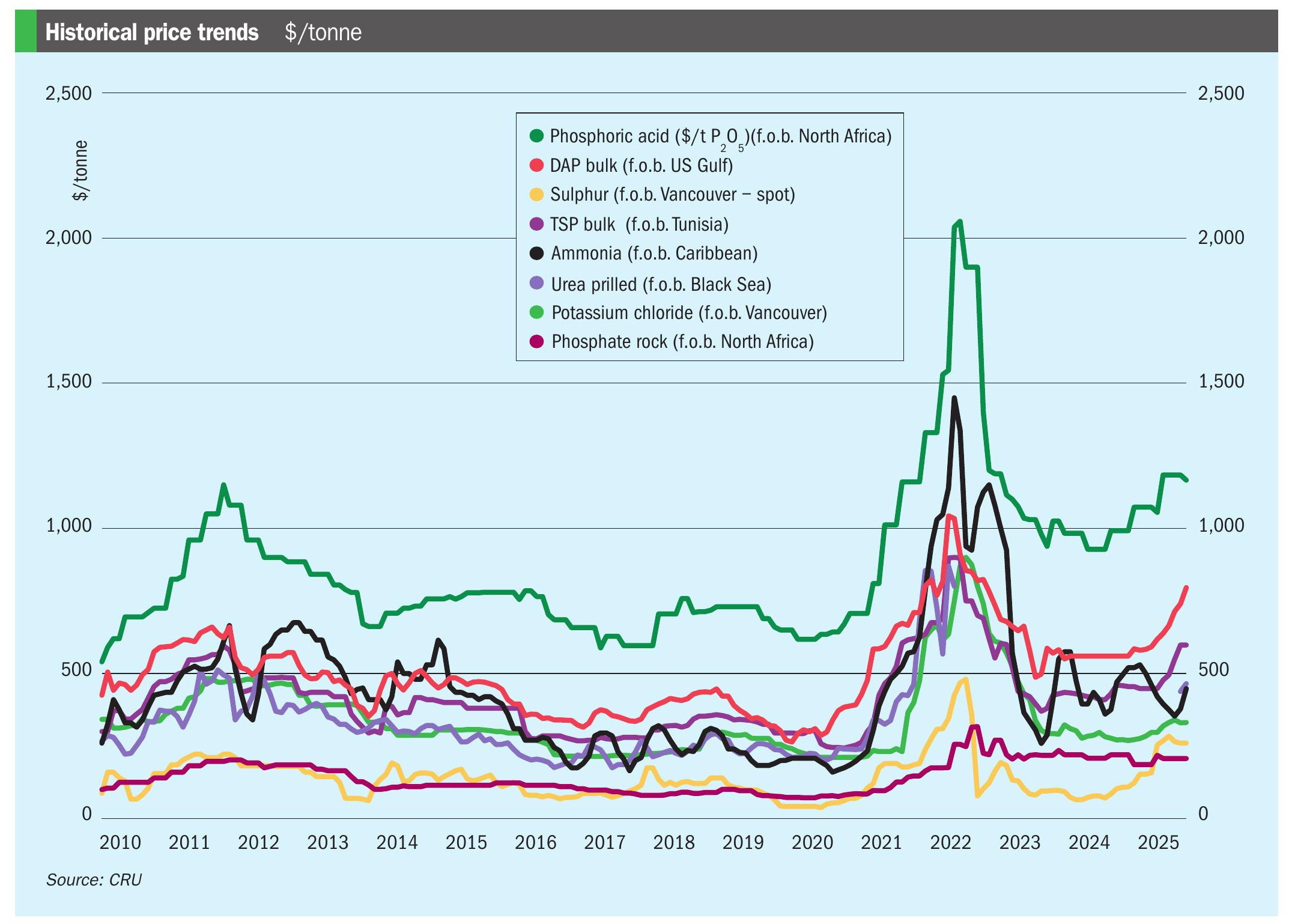Nitrogen+Syngas 387 Jan-Feb 2024

31 January 2024
Price Trends
Price Trends
Ammonia prices are expected to remain soft moving through January with little in the way of price support from both a supply and demand perspective. Weakened global sentiment was characterised by news of January’s Tampa settlement $100/t down on December at $525/t CFR, with further declines anticipated in Q1 once the Gulf Coast Ammonia (GCA) project comes online. Traders returned to their desks in the New Year and ammonia prices extended losses amid a stable supply outlook and a distinct lack of downstream industrial and fertilizer demand.
The outlook for global urea prices is weak, but a purchase of a million tonnes by India may put a line under recent declines if buyers in Europe and the US are tempted back into the market. Paper markets indicate modestly firmer prices through the first quarter and by the second week of January, a number of Egyptian sales had lifted export prices from Damietta as high as $365/t FOB by 10 January.
December began on a positive note for urea markets with a flurry of Egyptian urea sales and firmer prices for delivery to Brazil, although the increase in values was short lived and piecemeal demand in Europe was insufficient to halt the downward trend. By mid-December buying interest from Brazil had fizzled out, although on 21st December India’s NFL floated a new import tender closing on the 4th of January for shipment by 29th February, and sellers breathed a sigh of relief.
Fresh enquiries emerged from Brazil and Europe, along with new sales from Egypt. Business at New Orleans was limited in the last week before Christmas amid little confidence that prices would move higher. On 6th January NFL opened offers revealing that Fertcom was lowest for West Coast India (WCI) at $316.80/t CFR, with Agri Commodities lower on the East Coast India (ECI) at $329.40/t CFR. By 8th January NFL had issued counters at those prices, which will mark a significant decline from an assessment of $340-345/t CFR for delivered prices to India on 4 January.
UAN benchmarks are expected to rise steadily from January through April due to renewed spring demand. Unrelenting wet weather in Europe has curbed farmer applications. Should these conditions persist, anticipated demand may not emerge as expected.
In France, the UAN-30 market has been stable with December prices sitting at €285/t FCA. In line with US UAN markets, demand is forecast to kick in in late January to February and prices should steadily increase through until April to around e325/t FCA. As UAN demand wanes seasonally, prices are expected to decline modestly, rather than slumping.
Traders show little concern over natural-gas storage levels given the mild winter in Europe to date. In addition, prices at the Dutch TTF gas hub fell just below $10/ MMBtu for February, boosting margins for UAN producers in the region. Production margins have been benefiting from easing gas costs since October 2023 and the favourable conditions for UAN production are likely to persist for the foreseeable future.

END OF MONTH SPOT PRICES
natural gas

ammonia

urea

diammonium phosphate







